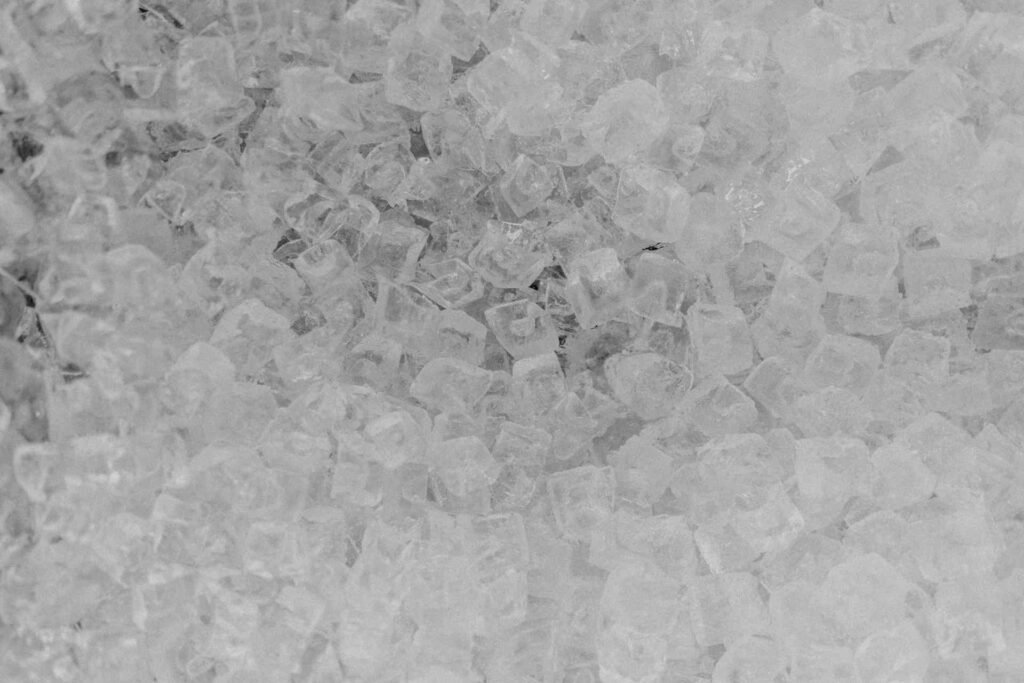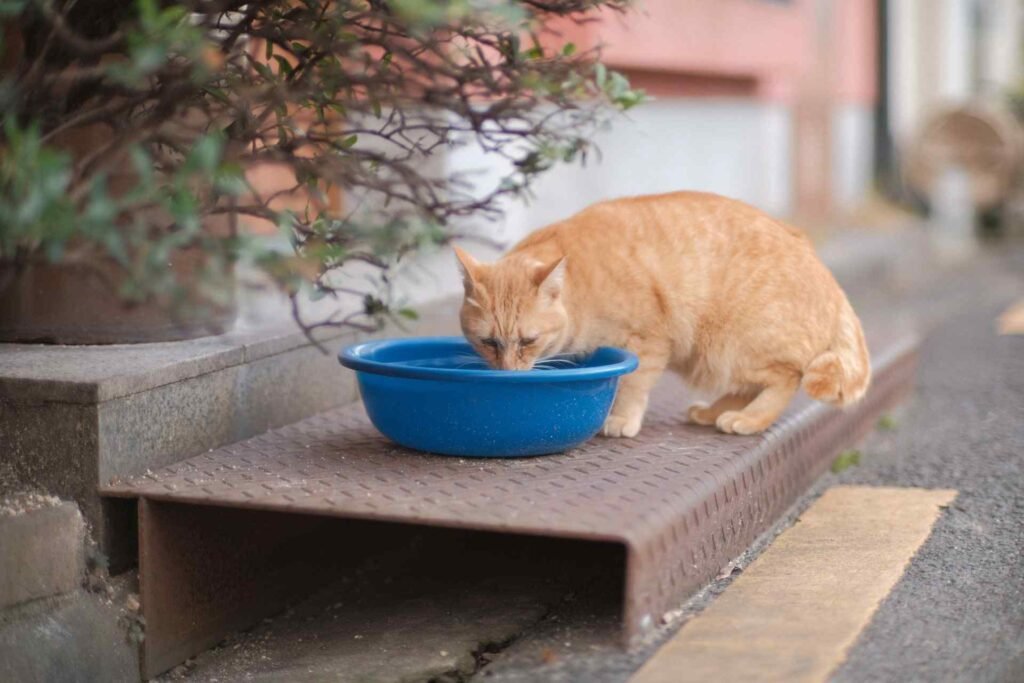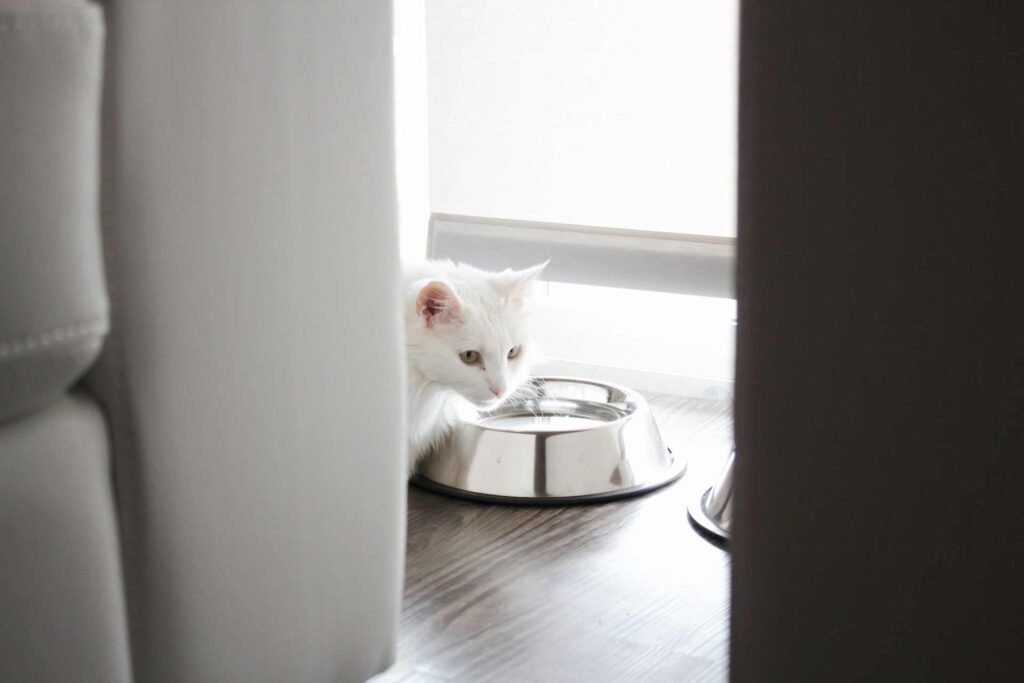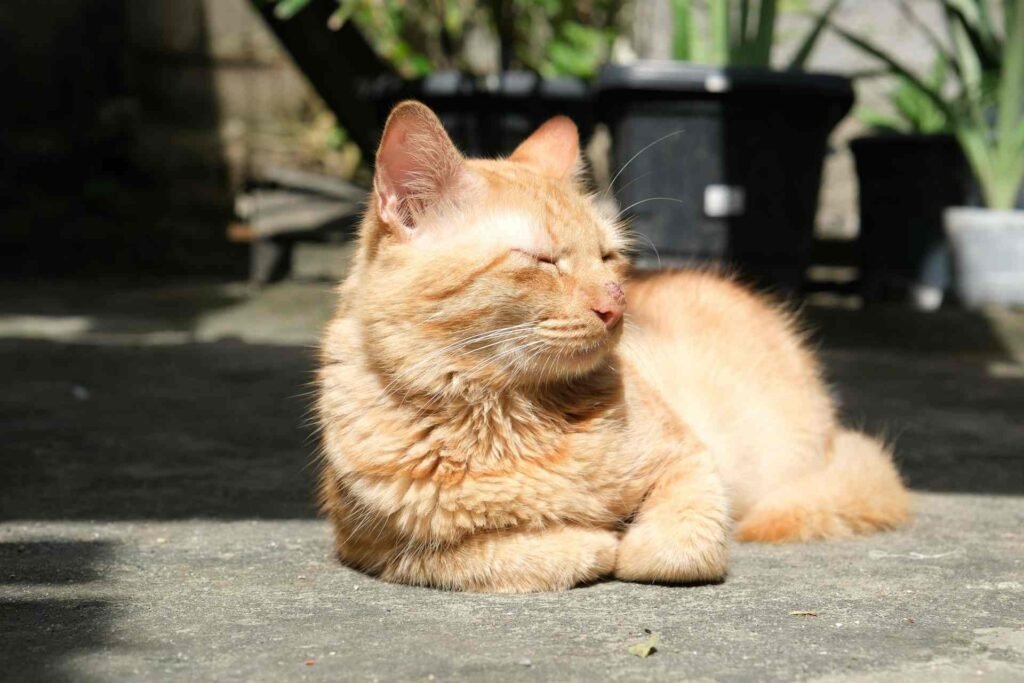When the summer heat kicks in and we’re reaching for our own ice-cold beverages, it’s natural to wonder if our feline friends might enjoy the same refreshing treat. The question “do cats like ice cubes in their water” has sparked curiosity among pet owners worldwide, and the answer might surprise you. While some cats absolutely love batting around ice cubes and sipping chilled water, others prefer their hydration at room temperature.
Understanding your cat’s preferences when it comes to ice cubes can make a significant difference in their overall hydration levels, especially during warmer months. Let’s dive into the fascinating world of feline hydration habits and explore whether adding ice cubes to your cat’s water bowl is the refreshing solution you’ve been looking for.

The Science Behind Cats and Cold Water
Cats have evolved as desert animals, which means they naturally don’t have the same strong thirst drive as many other animals. This evolutionary trait makes hydration a constant concern for cat owners. When we consider whether cats like ice cubes, we need to understand how temperature affects their drinking behavior.
Many cats actually prefer slightly cool water over room temperature water. The coolness can make the water taste fresher and more appealing, potentially encouraging increased water intake. This preference varies significantly between individual cats, with some showing immediate interest in ice-cold water while others may be hesitant or completely uninterested.
The temperature preference often depends on your cat’s early experiences, current health status, and individual personality. Some cats develop a fascination with ice cubes not just for the temperature, but for the entertainment value they provide.
Can Cats Have Ice Cubes Safely?
The straightforward answer is yes, cats can have ice cubes safely in most circumstances. Ice cubes pose minimal risk to healthy adult cats when offered appropriately. However, there are several important considerations to keep in mind before adding ice to your cat’s water bowl.
The primary concerns revolve around choking hazards for very young kittens or cats with certain health conditions. Additionally, some cats may experience digestive upset if they consume too much ice too quickly, though this is relatively uncommon.
Safety Considerations for Ice Cubes
When offering ice cubes to your cat, size matters. Standard ice cubes are generally safe for adult cats, but smaller cats or kittens might benefit from crushed ice or smaller ice chips. Always supervise your cat initially to observe their reaction and ensure they’re interacting with the ice safely.
Proper hydration habits play a crucial role in your cat’s overall health, and maintaining clean water sources is essential whether you’re adding ice or not. Fresh, clean water should always be the foundation of your cat’s hydration routine.
Why Do Cats Like Ice Cubes?
The reasons why cats like ice cubes go beyond simple temperature preferences. For many cats, ice cubes provide both physical and mental stimulation. The slippery texture, the way they move around the bowl, and the gradual melting process can all contribute to a cat’s fascination with ice.
Some cats enjoy the sensory experience of licking cold surfaces, while others are drawn to the movement and sound ice makes in their water bowl. The novelty factor also plays a role, many cats are naturally curious about new additions to their environment.

The Entertainment Factor
Ice cubes can serve as an unexpected source of entertainment for cats. The way they bob and move in water can trigger a cat’s hunting instincts, making hydration time more engaging. This playful interaction can be particularly beneficial for indoor cats who might be showing signs of boredom, as it provides mental stimulation during routine activities.
The cooling effect during hot weather is another significant draw. Cats may instinctively seek out cooler substances when they’re feeling overheated, making ice cubes an appealing option during summer months.
Benefits of Adding Ice Cubes to Cat Water
Adding ice cubes to your cat’s water can offer several practical benefits beyond just temperature control. During hot weather, cooler water can help maintain your cat’s body temperature and prevent overheating. This is particularly important for long-haired breeds or cats who spend time in warm environments.
Encouraging Increased Water Intake
One of the most significant advantages of offering ice cubes is the potential to increase your cat’s water consumption. Many cats are chronically under-hydrated, which can lead to various health issues including urinary tract problems and kidney disease. If cooler water encourages your cat to drink more, it can contribute to better overall health.
The sensory appeal of ice cubes can make water more interesting to cats who might otherwise ignore their water bowl. The movement, sound, and temperature change can all contribute to making hydration more appealing.
Temperature Regulation Benefits
During warmer months, ice cubes can help keep your cat’s water at a more comfortable temperature for longer periods. This is especially beneficial if your cat’s water bowl is located in a warm area of your home or if you live in a particularly hot climate.
Potential Drawbacks and Considerations
While ice cubes can be beneficial for many cats, there are some potential drawbacks to consider. Some cats may be sensitive to very cold water, particularly those with dental issues or certain health conditions. Dental health maintenance becomes even more important when considering temperature-sensitive oral care.
Individual Sensitivities
Not all cats will appreciate ice-cold water. Some may find it too shocking to their system, especially if they’re not used to temperature variations in their water. Older cats or those with sensitive stomachs might experience discomfort from consuming very cold water.
It’s also worth noting that some cats may become overly focused on playing with ice cubes rather than drinking, which could potentially decrease their actual water intake despite the added entertainment value.
How to Introduce Ice Cubes to Your Cat
If you’re interested in trying ice cubes with your cat, introduction should be gradual and observational. Start by adding just one or two small ice cubes to their regular water bowl and monitor their reaction. Some cats will immediately investigate, while others might need time to adjust to the change.

Best Practices for Ice Cube Introduction
Begin with smaller amounts and gradually increase if your cat shows positive interest. Always ensure the ice cubes are clean and made from the same quality water you’d drink yourself. Avoid flavored ice or ice made from tap water if your cat typically drinks filtered water.
Observing your cat’s behavior patterns can help you understand their preferences and determine the best times to offer ice cubes. Some cats may prefer ice cubes during certain times of day or seasons.
Ice Cubes vs. Other Cooling Methods
While ice cubes can be effective for keeping water cool, they’re not the only option available. Water fountains, elevated bowls, and strategic placement away from heat sources can all help maintain optimal water temperature without the need for ice.
Comparison of Cooling Methods
| Method | Pros | Cons | Best For |
|---|---|---|---|
| Ice Cubes | Instant cooling, entertainment value, cost-effective | Requires regular replacement, may not suit all cats | Cats who enjoy novelty and play |
| Water Fountains | Continuous circulation, appealing to movement-motivated cats | Higher initial cost, requires maintenance | Cats attracted to moving water |
| Ceramic Bowls | Naturally cooler material, easy to clean | Limited cooling effect, no entertainment value | Cats preferring consistent temperatures |
| Elevated Placement | Improved air circulation, ergonomic benefits | May not provide significant cooling | All cats, especially older ones |
Each method has its advantages, and the best choice depends on your individual cat’s preferences and your home environment.
Seasonal Considerations for Ice Cubes
The appeal of ice cubes often varies with the seasons. During summer months, cats may be more receptive to cooler water, while winter might see decreased interest in ice-cold beverages. Understanding how cats adapt to seasonal changes can help you adjust your approach accordingly.
Summer Hydration Strategies
Hot weather increases the importance of proper hydration, making ice cubes potentially more valuable during summer months. However, it’s crucial to ensure your cat doesn’t become solely dependent on ice water, as this could create problems during seasons when you’re less likely to provide it.
Winter Considerations
During cooler months, some cats may prefer room temperature or even slightly warm water. This doesn’t mean ice cubes are off-limits, but you might notice decreased interest. Keeping cats comfortable during temperature changes involves understanding their evolving preferences throughout the year.
Alternative Ways to Keep Cat Water Cool
If ice cubes aren’t appealing to your cat, there are several alternative methods to keep their water at an optimal temperature. Ceramic or stainless steel bowls naturally stay cooler than plastic ones, and strategic placement away from direct sunlight can help maintain comfortable water temperatures.
Creative Cooling Solutions
Some cat owners find success with freezing small amounts of water in ice cube trays with a bit of low-sodium chicken broth for added flavor appeal. Others use cooling mats placed under water bowls to maintain lower temperatures without direct ice contact.

Providing engaging alternatives can help ensure your cat stays interested in hydration even if they’re not fans of ice cubes specifically.
Signs Your Cat Enjoys Ice Cubes
Recognizing the signs that your cat enjoys ice cubes can help you determine whether to continue offering them. Positive indicators include immediate investigation of the water bowl after adding ice, increased drinking behavior, and playful interaction with the ice cubes themselves.
Behavioral Indicators
Cats who enjoy ice cubes often display increased interest in their water bowl, may bat at the ice cubes, or show excitement when they hear ice being added to their bowl. Some cats develop a routine around ice cube time, appearing in the kitchen when they hear the freezer opening.
When to Avoid Ice Cubes
There are certain situations where ice cubes should be avoided. Very young kittens, cats with dental problems, or those recovering from illness might not be suitable candidates for ice cube treats. Additionally, cats with sensitive stomachs or those prone to digestive upset should be introduced to ice cubes very gradually, if at all.
Health-Related Considerations
Cats with certain medical conditions may need to avoid ice cubes entirely. Always consult with your veterinarian if you’re unsure whether ice cubes are appropriate for your cat, especially if they have ongoing health issues or dietary restrictions.
Monitoring your cat’s eating and drinking habits becomes particularly important when introducing any new elements to their routine, including ice cubes.
The Role of Water Bowl Maintenance
Regardless of whether you add ice cubes to your cat’s water, maintaining clean water bowls is essential for encouraging proper hydration. Ice cubes can actually help keep water fresher for longer periods, but they shouldn’t replace regular cleaning and water changes.
Cleaning and Maintenance Tips
When using ice cubes, pay attention to any residue or buildup that might occur from melting ice. Some cats may be more particular about cleanliness when ice is involved, requiring more frequent water changes to maintain their interest.
The type of water bowl you use can also impact how effectively ice cubes cool the water and how long they last. Stainless steel and ceramic bowls tend to maintain cooler temperatures longer than plastic alternatives.
Frequently Asked Questions
Can kittens have ice cubes in their water?
While adult cats can generally handle ice cubes safely, kittens require more caution. Very young kittens (under 12 weeks) should avoid ice cubes due to choking risks and their developing digestive systems. For older kittens, crushed ice or small ice chips can be safer alternatives if they show interest in cooler water.
How many ice cubes should I add to my cat’s water bowl?
Start with one or two standard-sized ice cubes and observe your cat’s reaction. Most cats do well with 2-3 ice cubes in a standard water bowl. The goal is to slightly cool the water without making it uncomfortable for your cat to drink.
Will ice cubes hurt my cat’s teeth?
Ice cubes are generally safe for cats’ teeth, as most cats prefer to lick rather than bite ice. However, cats with existing dental problems or those who aggressively chew ice should be monitored closely. The cold temperature is typically more appealing than the texture for most cats.
Can I use flavored ice cubes for my cat?
Plain water ice cubes are the safest option for cats. Avoid flavored ice or ice made with additives, as these could contain ingredients that are harmful to cats. If you want to add interest, consider freezing a small amount of low-sodium chicken broth in ice cube trays occasionally.
Do all cats like ice cubes in their water?
Not all cats enjoy ice cubes. Preferences vary significantly between individual cats based on their personality, past experiences, and sensitivity to temperature changes. Some cats love the novelty and cooling effect, while others prefer their water at room temperature.
How often should I add ice cubes to my cat’s water?
There’s no set frequency for adding ice cubes to your cat’s water. During hot weather, you might add them daily, while cooler months might see less frequent use. The key is to observe your cat’s preferences and adjust accordingly. Always ensure fresh, clean water is available regardless of temperature.
Conclusion
The question of whether cats like ice cubes in their water doesn’t have a universal answer, and that’s perfectly normal in the wonderful world of feline preferences. Just like humans, our cats have individual tastes and quirks that make them unique. Some cats will practically do a happy dance when they hear ice cubes clinking into their bowl, while others might give you that classic “really, human?” look that we all know.
The beauty of trying ice cubes with your cat lies in the exploration itself. Whether your feline friend becomes an ice cube enthusiast or remains a room-temperature water traditionalist, you’re taking steps to understand their preferences better and potentially improve their hydration habits. And let’s be honest, watching a cat discover ice cubes for the first time can be pretty entertaining for us humans too.
So go ahead and experiment with ice cubes if you think your cat might enjoy them. After all, we’re all just trying to keep our feline overlords happy and healthy, one water bowl at a time. And who knows? You might discover that your cat has been secretly waiting for someone to finally add some excitement to their daily hydration routine.
Looking for more? Explore our Cat Health section for more posts like this, visit the Blog for fun and insightful reads, or browse our full Cat Category for everything feline-related, from care to comfort.
Disclaimer: This article is for informational purposes only and does not substitute for professional veterinary advice. Always consult your veterinarian for diagnosis and treatment tailored to your cat’s individual needs. Please verify current product information directly on the retailer’s site before purchasing.
Check out our most recent articles!
- Cats and Snow: Why Some Love It and Others Don’tSnow isn’t just uncomfortable for many cats, it’s a complete sensory overload. From cold paw pads to wet fur and changed landscapes, winter challenges feline comfort in unexpected ways. Learn how to recognize stress signals and create cozy alternatives for snow-averse cats.
- Christmas Names for Cats: From Classic to Creative Holiday IdeasNaming your holiday cat goes beyond festive fun. Discover why Christmas-inspired names age beautifully, spark instant connections with fellow pet lovers, and capture the warmth cats bring to our homes during the most magical season of the year.
- How to Keep Your Cat From Drinking Christmas Tree WaterYour cat’s obsession with Christmas tree water isn’t just annoying, it’s genuinely dangerous. From harmful bacteria to toxic additives, that festive reservoir poses real health risks. Discover practical solutions that protect your pet without sacrificing holiday cheer.
- Best Cat Toys for Christmas: The Ultimate Guide to Holiday JoyNot all Christmas gifts end up under the tree, some get batted across the floor at 3 AM. Explore the wonderful world of holiday cat toys that match your feline’s personality, from plush companions for cuddlers to high-tech options for the eternally energetic.
- Are Fake Christmas Trees Safe for Cats? A Holiday Safety GuideThat beautiful Christmas tree might look festive to you, but to your cat, it’s an irresistible climbing gym with built-in toys. Find out whether artificial trees are truly safer for cats and discover the hidden dangers lurking in your holiday decorations.
- The Best Christmas Gifts for Cats That’ll Actually Get Used (Not Ignored)Not all Christmas gifts land on the nice list with our feline friends. Discover which presents actually spark joy in cats and which ones end up gathering dust under the couch by New Year’s Day.
- Do Cats Eat Less in Winter? How Cold Weather Affects Your Cat’s AppetiteWinter brings more than just cold weather, it can completely change your cat’s eating habits. From bored indoor cats to outdoor ferals fighting to survive, discover what’s really driving those appetite changes and how to respond appropriately.
- Are Humidifiers Good for Cats? A Complete Safety & Health GuideNot all humidifiers are cat-safe, and some common practices could be toxic. Learn why cool mist beats warm mist, why essential oils are dangerous for felines, and how proper humidity levels between 30-50% support your cat’s breathing and coat health.
- How to Protect Leather Furniture From Cats (Without Losing Your Mind)Leather furniture and cat claws seem like natural enemies, but they don’t have to be. Learn why your cat is drawn to that expensive couch in the first place, and how simple redirects can save your furniture while keeping your cat’s natural behaviors satisfied.
- The Best Material for Cat Bowls: Protect Your Cat from BacteriaStainless steel, ceramic, or plastic, which material keeps your cat healthiest? We break down the science behind cat bowl materials, revealing why some harbor bacteria and others last decades without compromising your feline’s wellbeing.










